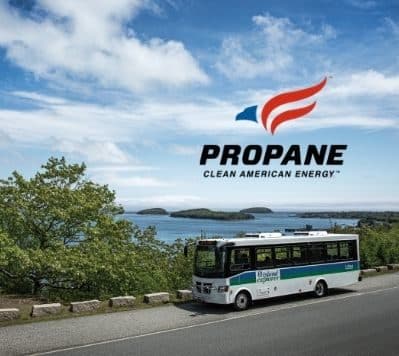A Low-Carbon Future | How Do We Get There?
Increasing carbon dioxide emissions in our atmosphere pose a serious challenge. How do we meet the increasing energy needs of the world and reduce carbon in our atmosphere? Propane’s low-carbon, high-energy output makes it an ideal fuel for vehicle fleets, school buses, transit vehicles, agriculture, shipping, industrial work and more.
In Acadia National Park, for example, the National Park Service has used propane-powered buses for many years to ferry passengers to different locations in the park because cars, and all the challenges they bring (emissions, parking lots, etc.), are not welcome. Mammoth Cave in Kentucky does the same.
Paratransit buses in many communities are now powered by propane because they deliver on the payload and range requirements, offer a low cost of operation in terms of fuel price and reduced maintenance, and deliver emission reductions of more than 50 percent compared to gasoline or diesel. It’s no wonder companies like Nestle Waters and UPS have made propane-powered vehicles an important part of their sustainability investments.
New Class 8-ready propane engines also have a place in the journey toward a lower-carbon world. They produce power, torque and thermal efficiency well beyond diesel engine performance and produce less CO2. Hybrid vehicles—propane paired with electric, are used in Las Vegas taxi cab fleets and will be used in the official car for the upcoming Tokyo Olympic Games.
All of this is possible with conventional propane, but there are even more potential benefits coming down the line with renewable propane. In partnership with biodiesel refineries, propane can now be produced from animal fats and cooking oils before they are made into bio-diesel. These products used to be landfilled without regard. Now, they have a new life. Once renewable propane becomes widely available, it can be easily and effortlessly integrated into propane vehicle fleets.
